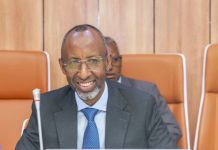- Economic growth in Sub-Saharan Africa is set to slow from 3.6% in 2022 to 3.1% in 2023. Growth remains sluggish, dragged down by uncertainty in the global economy, the underperformance of the continent’s largest economies, high inflation, and a sharp deceleration of investment growth
- The real gross domestic product (GDP) growth of the Western and Central Africa subregion is estimated to decline to 3.4% in 2023 from 3.7% in 2022, while that of Eastern and Southern Africa declines to 3.0% in 2023 from 3.5% in 2022.
- Debt distress risks remain high with 22 countries in the region at high risk of external debt distress or in debt distress as of December 2022.
- Although headline inflation appears to have peaked in the past year, inflation is set to remain high at 7.5% for 2023.
- Investment growth in Sub-Saharan Africa fell from 6.8% in 2010-13 to 1.6% in 2021, with a sharper slowdown in Eastern and Southern Africa than in Western and Central Africa.
- Countries such as Kenya, Cote d’Ivoire, and the Democratic Republic of Congo (DRC) are showing resilience amidst multiple crises, growing at 5.2%, 6.7%, and 8.6% respectively in 2022.
- In the face of dampened growth prospects and rising debt levels, African governments must sharpen their focus on macroeconomic stability, domestic revenue mobilization, debt reduction, and productive investments to reduce extreme poverty and boost shared prosperity in the medium to long term.
LINKS:
Press release
Publication
English: https://www.worldbank.org/en/publication/africa-pulse
French: https://www.banquemondiale.org/fr/publication/africa-pulse
Event
Regards,
Fatuma Hirsi, PhD
Communication Specialist
Somalia Country Office
World Bank Group | Delta Center | Menengai Road, Upper Hill, Nairobi
P.O Box 30577-00100, Nairobi Kenya
Email: fhirsi@worldbank.org
Web: www.worldbank.org;
Twitter: @mpf1somalia












